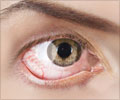- Watery eyes - (http://www.mayoclinic.org/symptoms/watery-eyes/basics/definition/sym-20050821)
What are the Symptoms of Watery Eyes?
Watery eyes are nothing but increased tearing due to excess production of tears by the lacrimal gland or insufficient drainage of the tears by the nasolacrimal duct. The lacrimal gland is located below the upper eyelid and produces tears which lubricate the surface of the eye when we blink our eyes.
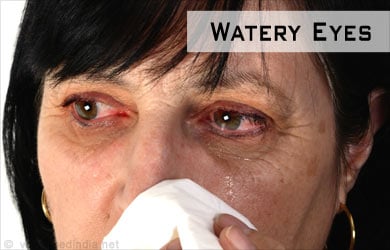
Causes of watery eyes:
- Aging
- Conjunctivitis
- Dry eye syndrome
- Blepharitis
- Clogged tear duct
- Allergies
- Exposure to dry climate, chemicals, dust etc
- Inward or outward turned eye lids
Common symptoms associated with watery eyes:
- Burning red eyes
- Itching in the eye
- Sensation of foreign body in the eye
- Swelling of the eyelid
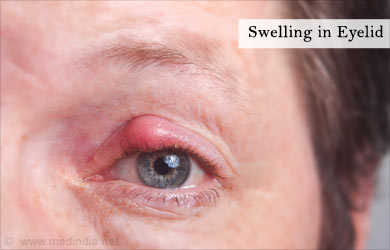
- Crusting around the eye
- Eye discharge
Diagnosis may be done by taking a detailed history, presentation, examination of the eye and tear specimen. Treatment of watery eyes depends upon the cause. Infections can be given a course of antibiotics, while allergies can be treated with antihistaminic drops. In case of dryness and discomfort in the eyes artificial tears can be prescribed for relief.
Watery eyes can be prevented by following these simple steps:
- Frequent blinking of the eye
- Taking vitamin A & C rich foods
- Protecting eyes from UV light exposure by using sunglasses
- Drinking adequate amount of water every day
- Avoiding triggering agents like allergens (dust, pollen, chemicals)
- Using humidifier in dry climate
Watery eyes symptom can be noticed in various conditions like:
- Dry eyes – This syndrome is caused either due to inadequate tear production or production of sufficient tears which are unable to provide adequate moisture to the eye. Excessive tearing in this condition can happen due to the response from the brain to dry eyes. Other associated symptoms include sensation of foreign body in the eye with pain and discomfort, itching in the eyes, frequent blinking of the eye, swollen red eyes and so on.
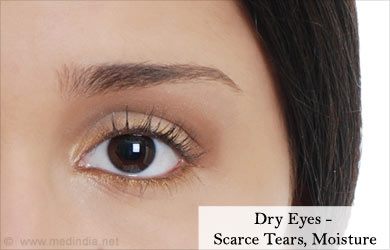
- Blepharitis - This is the inflammation of the eyelids that occurs due to malfunctioning of the oil glands that are located at the junction where the eyelashes are attached to the eye lids. It presents with watery red eyes, burning sensation in the eye, sticky eyelids, itchy swollen eyelids, red eyelids, crusted eye lashes etc. Examination of the eye with a skin swab testing from the eye lid is useful in concluding the cause.
- Clogged tear duct – Blocked tear duct can be due to abnormal growth of the tear duct leading to failure of opening of the tear duct, infections, and abnormal growth of nasal bone causing pressure on the tear duct leading to blockage. Infants are commonly affected by this condition due to inadequate development of the tear duct. This condition presents with excessive tearing, recurrent eye infections, mucus or pus discharge from the surface of the eye, blurred vision and swelling with pain in the inside corner of the eye. Tests to identify the location of blockage like fluorescein dye disappearance test, dacryocystography along with CT scan and MRI are useful. Irrigation and probing of the tear duct with saline solution can resolve a narrowed puncta in the tear duct.
- Ectropion and entropion – Turning of the eye lid outwards is called as ectropion, while turning of the eyelid inwards is called as entropion. Lower lid is commonly affected by ectropion. Examination of the eye with physical examination is required to assess the degree of abnormality, muscle tone and tightness of the eyelid. Muscle weakness, facial paralysis, benign or malignant growths of the eyelid, infections, surgeries or radiation previously, congenital malformations are some of the causes for developing an ectropion or entropion.
- Hay fever – This is nothing but allergic rhinitis which commonly presents with sneezing, nasal congestion, itchy eyes, cough, excessive tearing and so on. Triggering agents for hay fever include dust, pollen, certain chemicals, smoke, fungi/ molds in wet spaces etc. Diagnosis is made on the basis of identifying the triggering agents causing an attack of hay fever. Usually skin prick test and radioallergosorbent (RAST) test are useful for this purpose.
- Trachoma – It is a bacterial infection that affects the eyes. It is very contagious and can spread by direct contact with eyes, eye lids, nasal and throat infections of infected people. It presents with itching, watery eyes, pain, discharge from eyes (mucus or pus), sensitivity to light and blurred vision. Diagnosis is made by examination of the eye and specimen of discharge. Topical tetracycline with oral azithromycin is useful in treating this situation.
- Conjunctivitis – It is an inflammation of the conjunctiva, the outermost layer of the eye ball. It can be caused due to infection by bacteria, viruses, prolonged use of contact lenses or allergies. If it is from an infectious origin, then it is considered contagious. It can present with redness in the eye, itching with discharge, irritation in the eye causing excessive tearing, discomfort in the eye, sticky eye lids and blurred vision etc. It may be diagnosed with slit lamp examination of the eye and by taking a sample of the discharge for identifying the organism causing it. Treatment depends upon the cause.
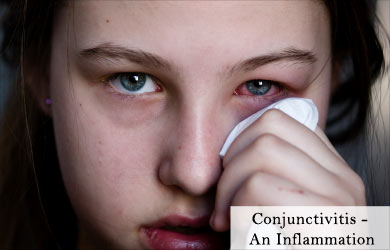
- Autoimmune diseases – Diseases like lupus erythematosus, rheumatoid arthritis, ankylosing spondylitis, reactive arthritis, gouty arthritis, psoriatic arthritis and so on manifest with scleritis at some point during their course. Scleritis is the inflammation of the sclera in the eye. It manifests with watery eyes, pain and redness in the eye, photo sensitivity, decreased visual acuity etc. Diagnosis is often done with the help of slit lamp examination of the eye. Cause for scleritis is investigated with additional tests.
Frequently Asked Questions
1. Which doctor should I approach for treating watery eyes?
You can approach an Ophthalmologist to treat watery eyes.
2. Who are the people usually affected by watering eyes?
People of any age get watering eyes. It is however, most common in babies and people over the age of 60. It occurs in one or both eyes.
3. What are the causes for blocked tear duct in babies?
The eyes get watery due to two reasons. One: you shed too many tears; the other: your tear duct is blocked. In babies, delayed normal development and delayed opening of the tear duct causes watery eyes.
4. Explain the dry eye syndrome?
Dry Eye Syndrome is caused by chronic lack of lubrication and moisture. Poor constitution of the tear film causes this condition. Abnormal lid function may also cause this at times.
5. Will lack of dry eye treatment cause loss of sight?
If left untreated, dry eye can cause irritable and troublesome condition known as chronic conjunctivitis. It may also cause considerable problem but it is improbable to lead to loss of sight.



